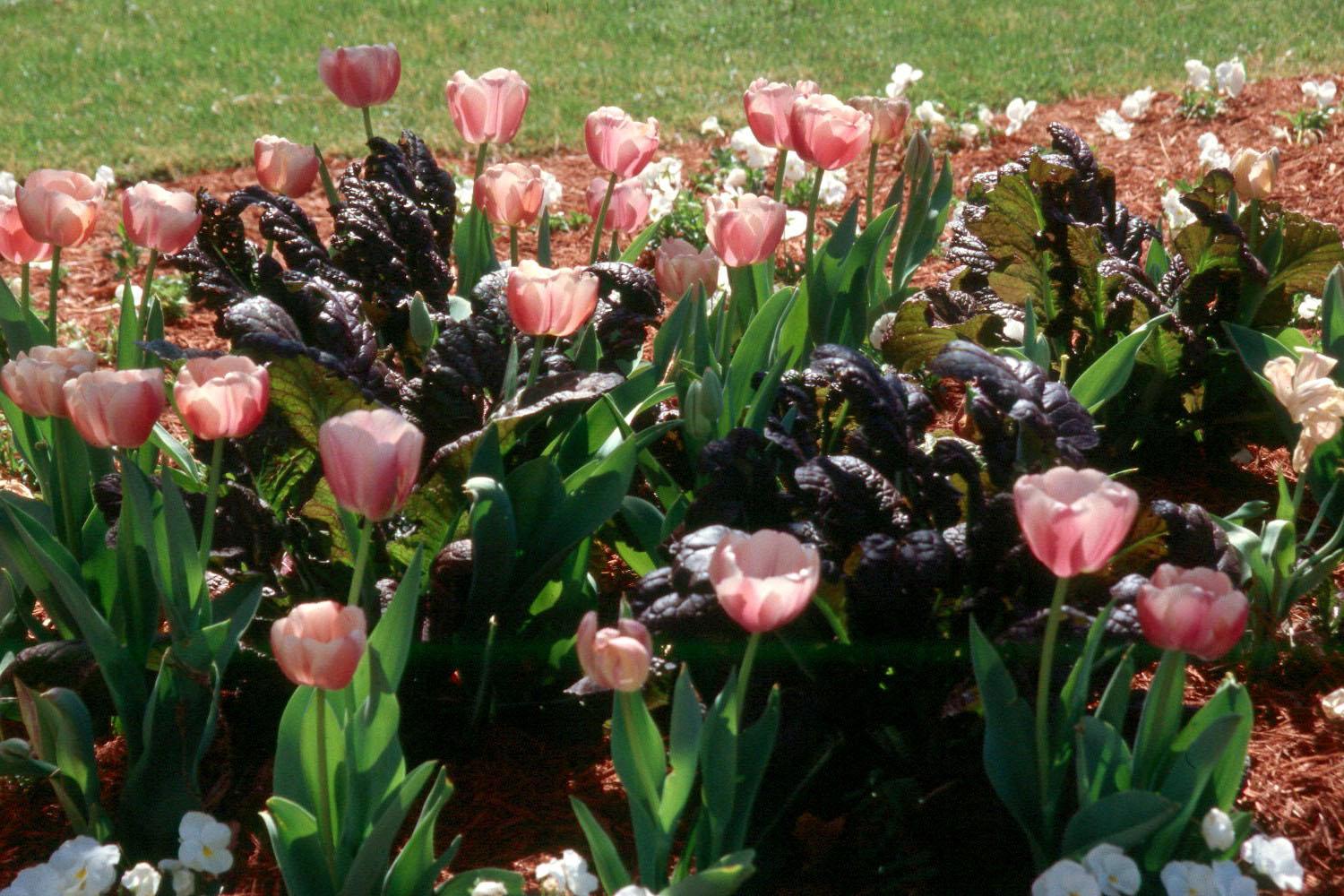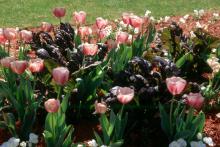Information Possibly Outdated
The information presented on this page was originally released on October 14, 2004. It may not be outdated, but please search our site for more current information. If you plan to quote or reference this information in a publication, please check with the Extension specialist or author before proceeding.
Red Giant mustard wins Mississippi Medallion
By Norman Winter
MSU Horticulturist
Central Mississippi Research & Extension Center
The 2004 Mississippi Medallion award-winning Red Giant Mustard may be just what you need to liven up your fall and winter garden.
If you haven't tried Red Giant mustard, you have missed one of the hottest new plants for the fall and winter. They are strikingly beautiful in the landscape, and partner well with pansies like the Ultima Apricot shades and Delta Fire, and are incredible interplanted with spring-blooming pink tulips.
When planted now, it may look green with hints of burgundy, but just wait. As temperatures get below 60 degrees, the burgundy red begins to develop, making the landscape pop. If these beautiful burgundy red leaves weren't enough to make you go out and buy one today, consider also that the Red Giant mustard is tasty when cooked just like other mustard greens.
Now is the ideal time to get them planted while it is cool but not freezing. This gives them time to acclimate to your garden so they can put on their show from now through spring. Once acclimated to cool weather, they are rock-solid tough. If you're not ready to use them now, you have another chance next year as they do well planted in early spring.
Select a site in full sun with fertile, organic-rich soil. If the planting area has tight, heavy clay, amend with compost or humus to loosen. While preparing the soil, incorporate 2 pounds of a slow-release, 12-6-6-fertilizer with minor nutrients per 100 square feet of garden. Set out nursery-grown transplants 12- to 18-inches apart and add a layer of mulch.
Keep the Red Giant mustard growing vigorously with supplemental water during dry, cold periods and light applications of fertilizer every four to six weeks. Florida research has shown an even better response to water-soluble fertilizer once temperatures have gotten colder.
If abnormally cold weather is forecast, completely cover with a layer of pine straw and remove once temperatures have moderated.
The Red Giant mustard offers a lot of choices for companion plants. For a "Southern Gardening" television segment, we used the Red Giant mustard with the Delta Fire pansy and Tahiti daffodil. Delta Fire pansies have flowers that are brilliant yellow with shades of burgundy to rust.
Yellow Sonnet or Liberty snapdragons as well as the new dwarf Montego series offer great opportunities for combination plantings. Montegos come in several colors and are actually smaller than the Red Giant mustard. If you want a taller selection, try the Ribbons or the Sonnets.
Ornamental grasses and fall chrysanthemums also make great companion plants. Try the Red Giant with purple fountain grass, dwarf pampas or the dwarf fountain grass variety Hameln. Yellow Jacket chrysanthemums would be exceptional partner.
Shop now while selections are greatest and temperatures are moderate. The winter landscape doesn't have to be dreary. The Red Giant mustard and pansies like Ultima Apricot Shades or Delta Fire are just a few of the great choices waiting for you.
The Mississippi Medallion program was started in 1996 and is sponsored by the Mississippi State University Extension Service, Mississippi Agricultural and Forestry Experiment Station, Mississippi Nursery and Landscape Association and the Mississippi Plant Selections Committee.








